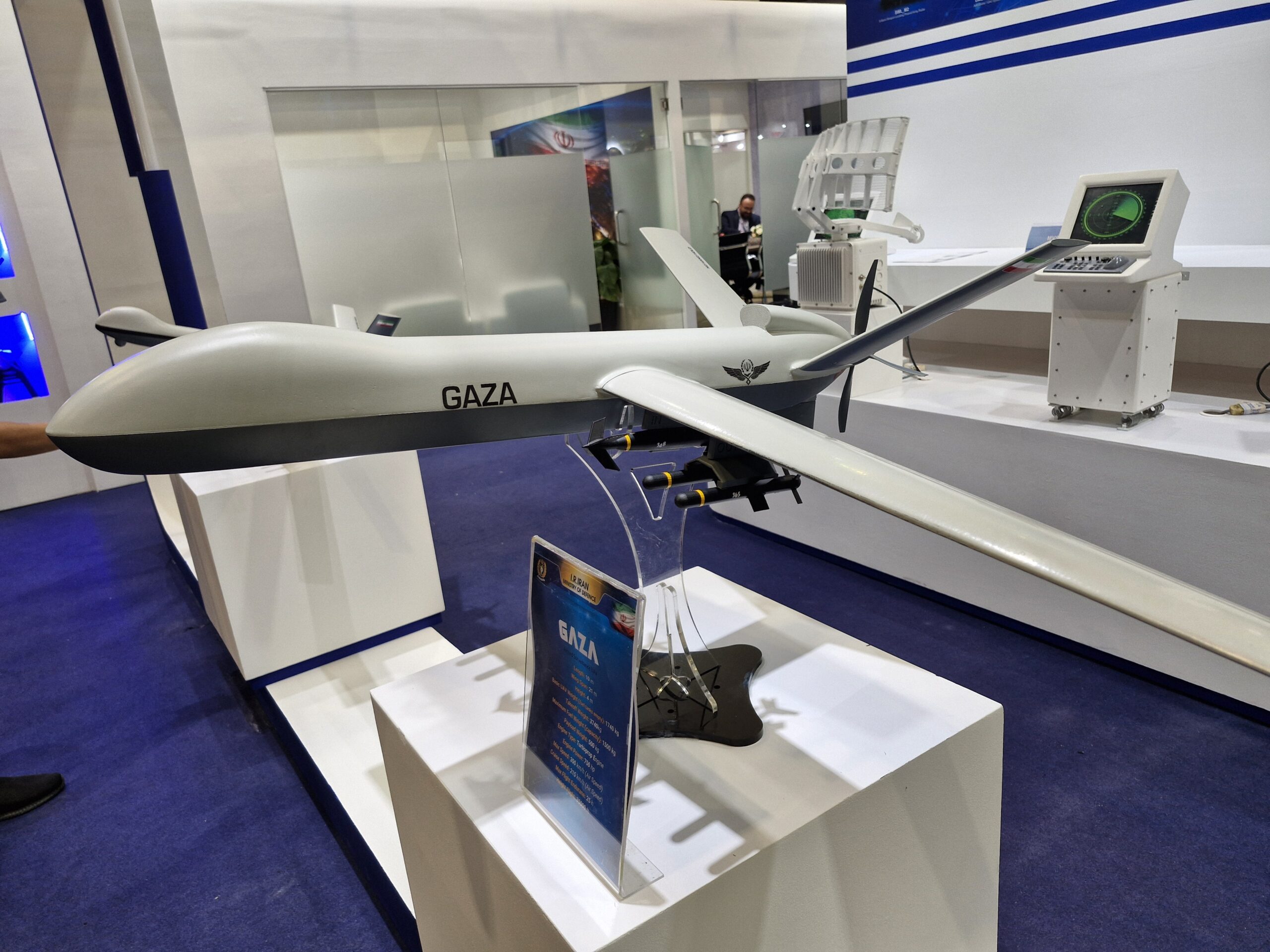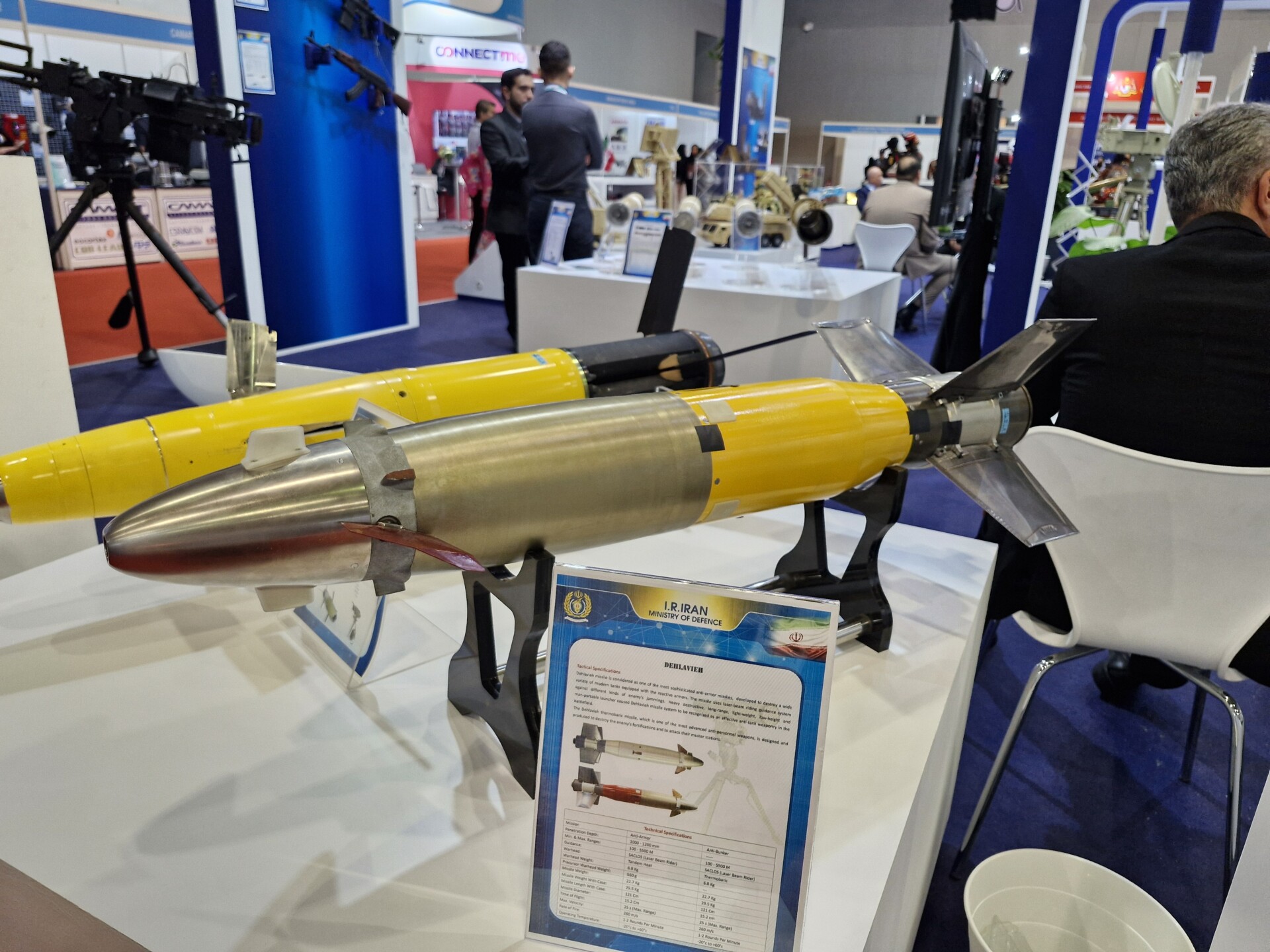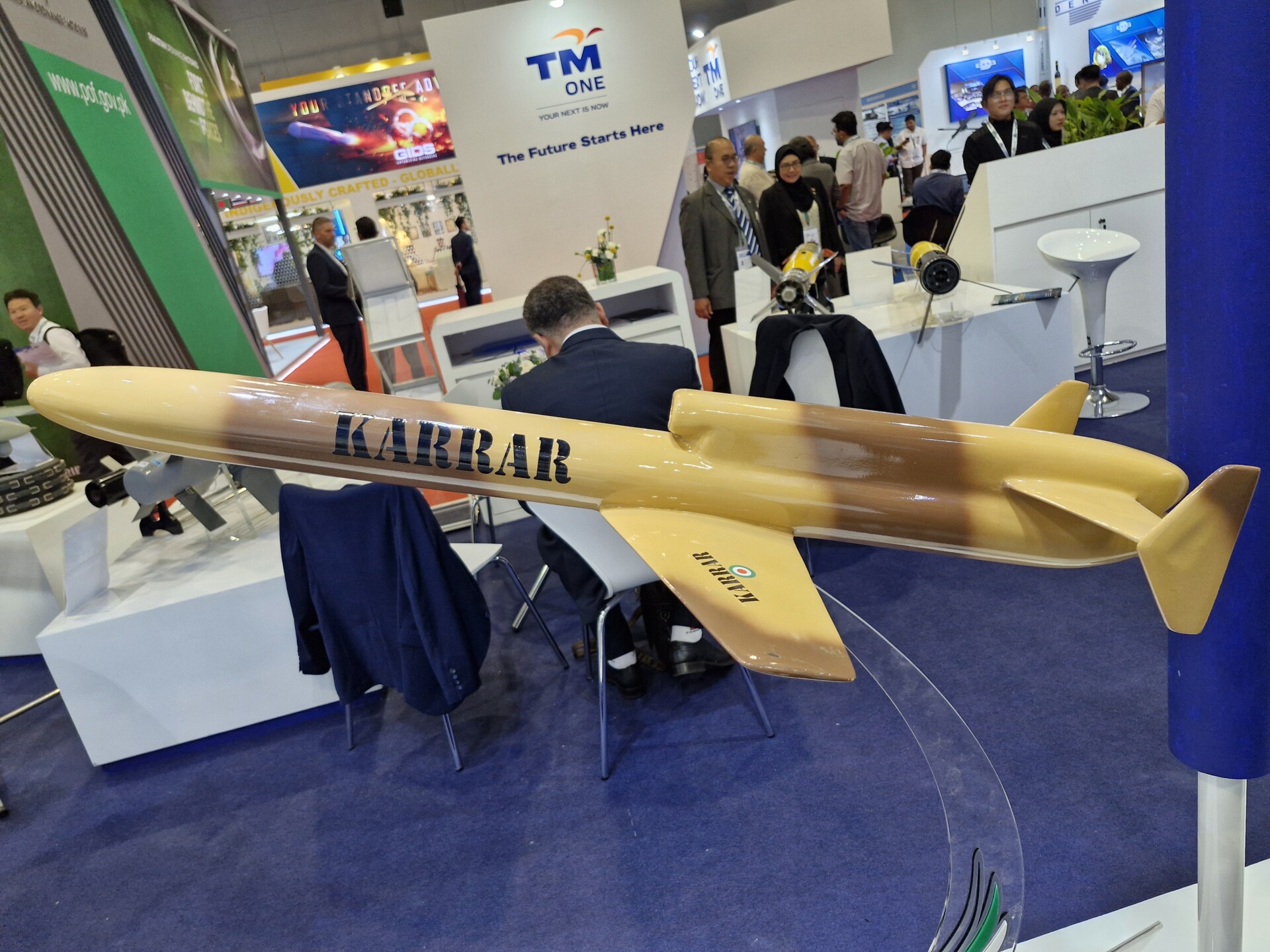Iran’s Defense Products Draw Significant Attention at DSA & NATSEC 2024 Exhibition in Kuala Lumpur
Since the DSA & NATSEC 2024 exhibition began in Kuala Lumpur last Monday, Iran National Pavilion has drawn visits from trade delegations and dignitaries who are interested in Iran's defense products, pulled in by the capabilities and performance of Iranian defense products, given their current use on various “theatres” in the Middle East.
(DEFENCE SECURITY ASIA) — One of the national pavilions attracting significant attention at the Defence Services Asia (DSA) and National Security (NatSec) Asia 2024 exhibition in Kuala Lumpur is that of Iran.
Since the exhibition began last Monday, the pavilion has drawn visits from trade delegations and dignitaries from both within and outside of the country who are interested in Iran’s defense products.
They are likely interested in the capabilities and performance of Iranian defense products, given their current use on various “theatres” in the Middle East.
According to an official at the Iran Pavilion, they are only showcasing a small portion of the defense systems developed by Iran’s defense industry at the DSA & NATSEC 2024 exhibition currently taking place at MITEC, Kuala Lumpur.
“What we are showcasing here is just a small part of Iran’s overall defense products. We cannot bring all (Iran’s defense products) to the DSA & NATSEC 2024 exhibition,” he said.

The Iranian Pavilion does not display the ballistic missiles used by the country to attack Israel recently, instead, what is visible are models of its cruise missiles and other defense system.
Another official at the Iran Pavilion stated that they are ready to cooperate with any party, interested in obtaining Iranian defense systems.
“As a sovereign and independent country, every nation has the right to deal with any country, including in defense matters, without being pressured by certain countries. All sales of armament systems with Iran are done in accordance with international law.”
“There is nothing to hide,” said the official at the Iran Pavilion, who is excited about the reception they have received at this exhibition.
Defence Security Asia spent about an hour at the Iran Pavilion and acknowledged that the pavilion was visited by many trade delegations from within and outside the country, including Malaysian VIPs who were interested in what was being showcased at the pavilion.
Among the most attention-grabbing items is the “Shahid-149 GAZA” drone, named after the struggle of the Palestinian people in the Gaza Strip.

Last October, the Islamic Revolutionary Guard Corps of Iran unveiled to the public an upgraded version of the “Shahid-149 Gaza” drone for the first time.
The design of the “Shahid 149-Gaza” drone, made by Iran’s local defense industry, Shahed Aviation Industries, and built by the Iran Aircraft Manufacturing Industries Corporation (HESA), closely resembles the well-known “MQ-9 Reaper” drone made by General Atomics of the United States.
Iran likely developed the “Shahid 149-Gaza” drone through reverse engineering efforts by its weapons experts after obtaining the wreckage of a US-made drone successfully shot down by its allies in the battlefield.
The Iranian Revolutionary Guard revealed the upgraded variant of the drone at the Martyr Karimi Air Base in the city of Kashan last October.
According to Commander of the Islamic Revolutionary Guard Corps Major General Hossein Salami, the drone was named “Gaza” to commemorate those who fought against the Zionist occupation.
The “Shahid-149 Gaza” drone was first unveiled to the public in 2021.

In addition to armament systems, the drone can also carry various other systems such as electro-optical equipment, high-resolution cameras, infrared systems, laser designation, and laser illumination, making it one of Iran’s most advanced drones.
The drone has the capability to stay in the air for 35 hours, covering 7,000km in a single mission. It can fly at a speed of 350km/h using a 750 horsepower engine.
The Iranian military uses the drone for Intelligence, Surveillance, and Reconnaissance (ISR) missions, but with hardpoints indicating it can also be equipped with various armament systems for combat missions.
The “Shahid-149 Gaza” drone was built to replace the previous “Shahed 129” drone used by the Iranian Revolutionary Guard since 2012.
Another showcased armament system is the third-generation anti-tank guided missile “ALMAS,” believed to be a reverse-engineered product of Israel’s “Spike” anti-tank guided missile.
The Hezbollah armed group is reported to have used the Iranian-made “ALMAS” anti-tank guided missile against Israeli military positions in southern Lebanon for the first time.

Fighters from Hezbollah reportedly seized the Israeli “Spike” anti-tank guided missile during the conflict between the two parties in southern Lebanon in 2006 and handed it over to Iran.
Iranian weapons experts who obtained the “Spike” anti-tank guided missile carried out reverse-engineering efforts on the modern armament system and successfully produced the “ALMAS” anti-tank guided missile system.
The “ALMAS” anti-tank guided missile system was unveiled by Iran in 2021, with several variants including man-portable, air-launched, and vehicle-launched.
Like the “Spike” guided missile, the “Almas” guided missile also uses fiber-optic wire for the “fire-observe-and-update” mode, allowing its controller to guide the guided missile to its target with a high degree of accuracy.

In addition to the fiber-optic wire variant, the “Almas” anti-tank guided missile also has a “fire-and-forget” variant that only requires its controller to “lock-on” to the target and let the guided missile fly towards its target.
The “Almas” anti-tank guided missile has the ability to hit its target up to 8km away. — DSA



Comments are closed.